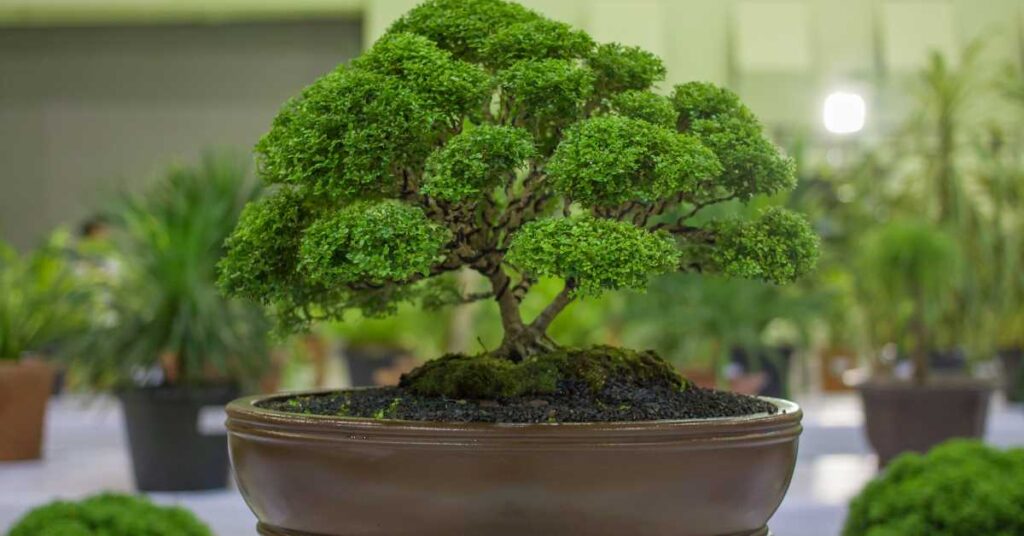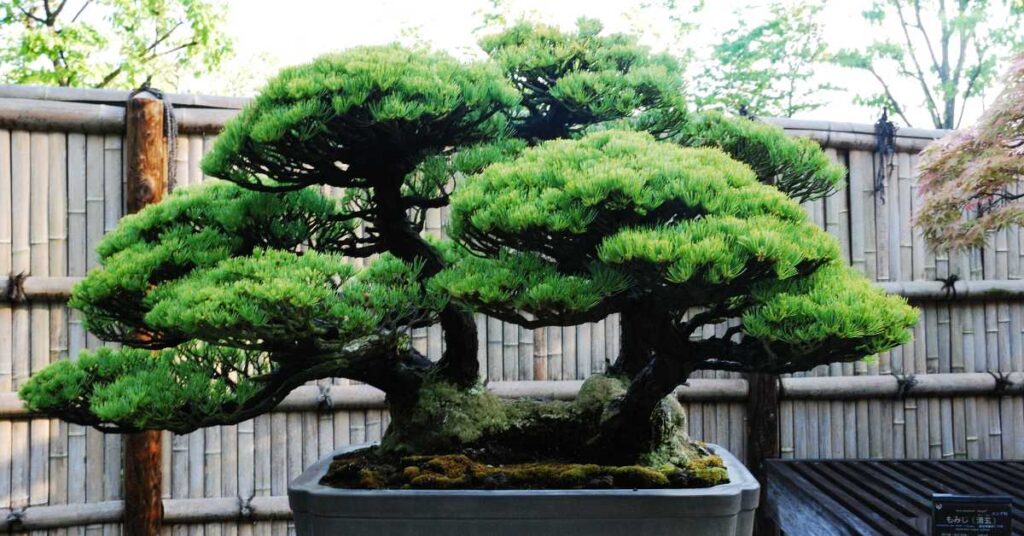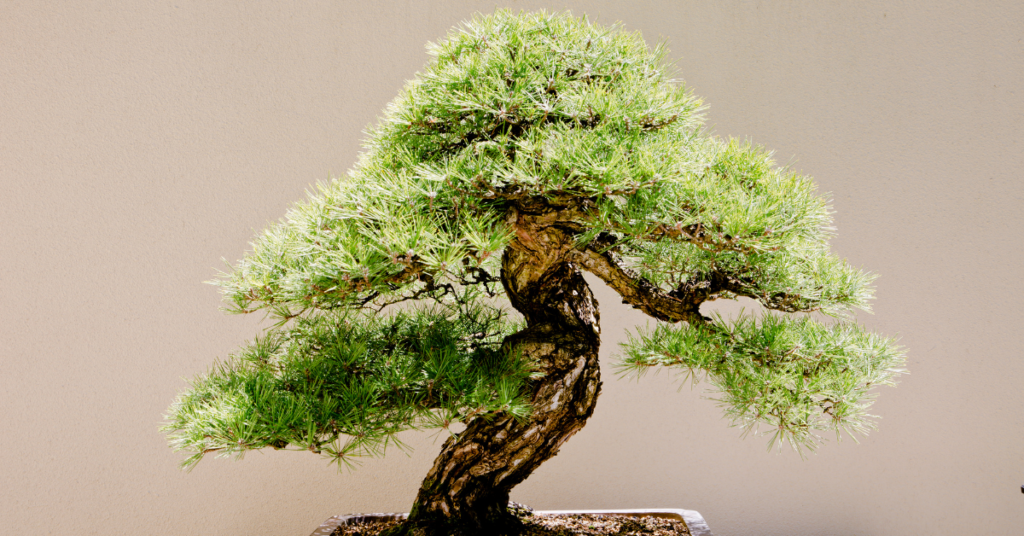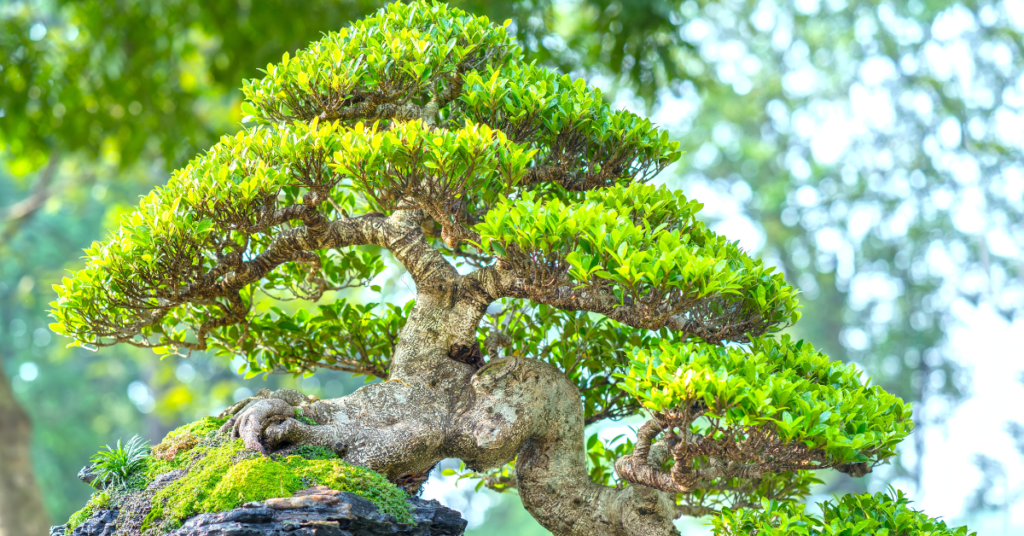Can any tree be a bonsai? Yes, you can technically make a bonsai tree out of any tree variety or species but there are certain species of tree that are better suited for making bonsai. Some of the most popular trees for bonsai include junipers, pines, maples, elms and ficus. These types of trees are hardy and able to withstand pruning and training that is necessary for a successful bonsai tree.
Bonsai is a Japanese art form that involves cultivating tiny trees in small containers. It’s a beautiful and calming practice that has been enjoyed for centuries, but one question that often comes up is whether any tree can be turned into a bonsai.
The answer is not as simple as a yes or no, but rather depends on the characteristics of the tree and the desired outcome. While some may think that any tree can be transformed into a bonsai with enough pruning and shaping, this is not necessarily true.
Bonsai trees need to have certain characteristics in order to thrive in their miniature state. These include being able to withstand root pruning without suffering damage, having small leaves and branches that are easy to shape, and being able to adapt to different soil conditions. With these factors in mind, it’s clear that not every tree can become a bonsai – but many can with proper care and attention.
Characteristics Of A Bonsai Tree
Bonsai trees are miniature versions of full-grown trees that are grown in small pots or containers. These trees require special care and attention to maintain their size and shape. Growing techniques for bonsai trees include pruning, wiring, and repotting.
To grow a healthy bonsai tree, ideal conditions must be maintained. Bonsai trees thrive in bright, indirect sunlight and require consistent watering to prevent the soil from drying out. The soil should be well-draining to avoid waterlogging, which can cause root rot.
Additionally, fertilization is essential for maintaining the tree’s health and promoting growth. With proper care and attention, any type of tree can become a beautiful bonsai specimen.

Understanding The Art Of Bonsai
Bonsai is an art form that originated in China over a thousand years ago. It was later embraced by the Japanese, who developed their own unique styles and techniques.
The history of bonsai is deeply rooted in the traditions of these cultures, and it has been passed down through generations as a way to connect with nature and express creativity.
The cultural significance of bonsai lies in its ability to capture the essence of nature within a small space. Through careful pruning and cultivation, a bonsai tree can represent an entire landscape, complete with mountains, rivers, and forests.
Bonsai also embodies principles such as patience, discipline, and respect for nature. Many practitioners view it as a form of meditation or spiritual practice.
Overall, the art of bonsai is a testament to the beauty and power of nature, as well as human ingenuity and creativity.
Factors To Consider Before Choosing A Tree
After understanding the art of bonsai, the question arises – can any tree be a bonsai? The answer is yes, technically any tree can be turned into a bonsai. However, not all trees are suitable for bonsai due to various factors such as climate considerations and size limitations.
Before choosing a tree for your bonsai, it’s important to consider your climate. Certain trees may not thrive in certain temperatures or humidity levels. Researching which trees are native to your area can help you determine which trees would be most successful as a bonsai in your climate. Additionally, some species of trees may require special care or attention depending on the climate they are placed in.
Size limitations are also an important factor when choosing a tree for bonsai. Trees that grow too large or have extensive root systems may not be suitable for smaller spaces like apartments or balconies. It’s important to choose a tree that will fit comfortably in the space you have available while still allowing room for growth and pruning.
By considering both climate and size limitations, you can choose the perfect tree for your bonsai project.
Common Types Of Trees Used For Bonsai
While it’s true that any tree can technically be turned into a bonsai, some species are more commonly used than others. Many people believe that certain trees simply lend themselves better to the art of bonsai due to their natural characteristics and growth patterns. However, this does not mean that you cannot experiment with other types of trees if you’re feeling adventurous.
Popular species for bonsai include:
- Japanese maple
- Juniper
- Pine
Each of these trees has unique qualities that make them ideal for bonsai. For example, Japanese maples have delicate leaves and branches that allow for intricate shaping, while junipers have naturally gnarled trunks that give them character right from the start. With proper care and attention, any of these trees can thrive as a bonsai.
Care tips for bonsai trees will vary depending on the species you choose, but some general guidelines include providing adequate sunlight and water, as well as regular pruning and shaping to maintain the desired form. It’s also important to keep your bonsai in a suitable container with well-draining soil to ensure healthy growth.
Remember, while there are certain types of trees that may be better suited for bonsai than others, ultimately the beauty of this art form lies in experimentation and creativity. So don’t be afraid to try something new and see what kind of masterpiece you can create!

Pruning Techniques For Bonsai Trees
After learning about the common types of trees used for bonsai, you might be wondering if any tree can be turned into a bonsai. The answer is yes, but not all trees are suitable candidates. Trees with naturally small leaves and compact growth habits are ideal for bonsai, as they can be easily trained and shaped into the desired form.
To turn a tree into a bonsai, you will need some tools such as pruning shears, wire cutters, and concave cutters. These tools will help you shape and maintain the tree’s structure over time. However, it’s important to avoid some common mistakes when working on your bonsai. One mistake is not allowing enough time for the tree to recover between pruning sessions. Another mistake is using wire that is too thick or leaving it on for too long, which can damage or scar the bark. By being mindful of these mistakes and investing in quality tools, you can successfully turn almost any tree into a beautiful bonsai.
| Tools needed | Common mistakes to avoid |
|---|---|
| Pruning shears | Not allowing adequate recovery time between pruning sessions |
| Wire cutters | Using wire that is too thick or leaving it on for too long |
| Concave cutters | Over-fertilizing the plant |
| Bonsai soil | Watering too much or too little |
Remember that turning a regular tree into a bonsai takes patience and dedication. With careful attention to detail and proper care techniques, you can create a stunning miniature version of your favorite tree species.

Shaping And Styling Your Bonsai Tree
So, you’ve decided to create your very own bonsai tree. Congratulations! But before you can start styling and shaping your tree, let’s address the elephant in the room – can any tree be a bonsai?
The answer is simple – technically yes, but realistically no. While any tree can be trained and pruned to become a bonsai, not all trees are suitable for this art form. It takes time, patience, and the right tools to turn a regular tree into a beautiful miniature version of itself.
Now that we’ve got that out of the way, let’s move on to the fun part – shaping and styling your bonsai tree. This is where you get to add your personal touch and creativity to your miniature masterpiece. But before you dive in headfirst, it’s important to know what tools you’ll need and how to use them properly.
Here are some essential tools for shaping your bonsai:
- Pruning shears
- Bonsai wire cutters
- Root rake or hook
- Concave cutters
Wiring your bonsai tree is also an essential part of shaping and styling. This technique involves wrapping wire around branches and trunk to guide their growth into a particular shape. Remember to choose the right thickness of wire depending on the size of your tree’s branches.
Choosing the right pot or container for your bonsai is another crucial step in its development. The container should complement the size and style of your tree while allowing enough space for root growth. Remember that not all pots have drainage holes, so make sure yours does before planting.
Shaping and styling your bonsai can be a fun and rewarding experience with the proper knowledge and tools on hand. Don’t be afraid to experiment with different techniques until you find what works best for you and your tree!
Soil Requirements For Bonsai Trees
While certain trees may be more suitable for bonsai cultivation due to their size, leaf shape, and growth habits, technically any tree can be trained as a bonsai. It all depends on the skill level of the grower and their ability to work with the specific characteristics of each tree.
Once you have selected your tree, it is important to consider its soil requirements. Bonsai trees require soil with a specific pH level and drainage system in order to thrive.
The pH level should be between 6.0-7.5, which is slightly acidic to neutral. This can be achieved by mixing peat moss or sphagnum moss into the soil mixture.
As for drainage systems, bonsai trees require well-draining soil in order to prevent root rot and other fungal diseases. This can be achieved by using a mixture of sand or perlite with regular potting soil.
By ensuring that your bonsai tree has proper soil requirements, you will set it up for success and help it grow into a beautiful miniature version of itself.
Watering And Fertilizing Your Bonsai Tree
As the saying goes, a bonsai is a tree in a pot, but it’s not just any tree. It’s a carefully cultivated miniature version of its full-grown self, one that requires dedication and patience to maintain.
One crucial aspect of bonsai care is watering. Overwatering dangers are real, as too much moisture can cause root rot and kill the tree. It’s important to know your bonsai’s species and its water needs to avoid this issue.
Choosing fertilizers is another important factor when caring for your bonsai tree. There are many options available on the market, but not all are created equal. Some fertilizers may be too strong for your particular species of bonsai and can cause damage or even death. It’s essential to research which type of fertilizer is best suited for your specific tree and follow the instructions carefully when applying it.
Remember, with proper watering and fertilizing techniques, your bonsai will thrive for years to come!

Repotting Your Bonsai Tree
When it comes to repotting your bonsai tree, it’s important to choose the right pot. The pot should be just slightly larger than the root system of your tree, as too much space can lead to over-watering and other issues. Additionally, consider the material of the pot – clay pots are great for retaining moisture, while plastic pots allow for more air circulation.
Once you have chosen the right pot, it’s time to think about training techniques. Before repotting, take some time to carefully prune any overgrown roots or branches. This will help your tree maintain its shape and stay healthy in its new pot.
Then, when replanting, use a well-draining soil mix that is specifically designed for bonsai trees.
With these tips in mind, you’ll be well on your way to successfully repotting your bonsai and keeping it thriving for years to come.
Maintaining The Health And Beauty Of Your Bonsai Tree
After successfully repotting your bonsai tree, the next step is to ensure its health and beauty are maintained. This involves proper tree species selection and pests and disease management.
When it comes to selecting a tree species for your bonsai, not all trees are suitable. It’s important to choose a species that is adaptable to being grown in a small container and can handle frequent pruning. Some popular bonsai tree species include juniper, pine, maple, and ficus. Before purchasing a tree, be sure to research its specific care requirements to ensure you can provide the necessary conditions for its growth.
If left untreated, pests and diseases can quickly damage or kill your bonsai tree. Common pests include spider mites, mealybugs, and aphids while common diseases include root rot and fungal infections. Regularly inspecting your tree for signs of infestation or disease can help you catch problems early on.
You can manage pests through natural methods such as spraying with water or using insecticidal soap while treating diseases that may require fungicides or antibiotics. Taking preventative measures such as keeping your bonsai clean and healthy can also help prevent these issues from occurring in the first place.
Frequently Asked Questions
Are There Any Trees That Are Not Suitable For Bonsai?
When it comes to bonsai, tree selection is crucial. While many trees can be trained into bonsai, there are some that are not suitable for the art form.
Trees with large leaves or branches, fast-growing varieties, and those that do not respond well to pruning should generally be avoided. It’s important to consider the natural growth habits of the tree as well, as certain species may require more intensive training techniques to achieve the desired look.
With proper research and selection, however, almost any tree can become a stunning bonsai specimen with patience and dedication to the craft.
Can I Use A Tree From My Backyard As A Bonsai?
When it comes to backyard tree selection for bonsai, there are a few things to consider.
First, you want to choose a tree that has small leaves and branches, so that they can be easily pruned and shaped. Some good options include Japanese maple trees, junipers, and pines.
However, it’s important to note that not all backyard trees are suitable for bonsai pruning techniques. You’ll want to avoid trees with brittle wood or those that are prone to disease.
With careful selection and proper care, though, you can certainly use a tree from your own backyard as a beautiful bonsai.
Can I Bonsai A Fruit-Bearing Tree?
Yes, it is possible to bonsai a fruit-bearing tree, but it requires proper pruning techniques to maintain both the size and fruit yield of the tree.
The goal of bonsai is to create a miniature version of a tree while still preserving its natural beauty and characteristics.
Fruit-bearing trees such as apple, cherry, and citrus can be bonsai-ed with careful pruning that encourages the growth of smaller branches and fruits.
However, excessive pruning can reduce fruit yield, so it’s essential to strike a balance between maintaining the aesthetics and functionality of the tree.
How Long Does It Take For A Tree To Become A Bonsai?
Oh, the art of bonsai cultivation! It’s like painting a masterpiece on a tiny canvas.
But if you’re thinking about trying your green thumb at this fine craft, you might want to buckle up and take notes. Bonsai cultivation techniques require patience, knowledge, and a whole lot of TLC. Common challenges in bonsai tree growth include pests, diseases, improper watering, and lack of nutrients.
And if you’re wondering how long it takes for a tree to become a bonsai…well, that depends on the species and how much effort you put into it. Some trees can take years to develop into their miniature form while others may take decades. But don’t let that discourage you! With the right tools and techniques under your belt, you can turn any ordinary tree into an extraordinary bonsai masterpiece.
Can I Bonsai A Tree That Has Already Been Planted In The Ground?
You can bonsai a tree that has already been planted in the ground, but it requires specific transplanting techniques and soil composition.
To begin, carefully dig up the tree and prune its roots to fit into a smaller pot.
The soil used should be well-draining with a mix of organic and inorganic materials.
It’s important to monitor the tree’s growth and adjust its training accordingly to maintain its miniature size.
With patience and proper care, any tree can be transformed into a beautiful bonsai.
Conclusion
In conclusion, bonsai is not just a hobby, it’s an art form that requires patience, dedication, and love. While any tree can technically be used for bonsai, some may not be suitable due to their growth habits or size. However, with proper care and training, even a tree from your own backyard can become a stunning bonsai masterpiece.
Bonsai is not just about creating miniature trees but also about cultivating a relationship with nature. It’s a way to connect with the earth and appreciate the beauty of life in its smallest forms.
So go ahead and try bonsai-ing that fruit-bearing tree or that planted-in-the-ground sapling – you never know what kind of magic you might create. Remember, every tree has the potential to be shaped into something extraordinary – all it takes is a little bit of time and patience!



